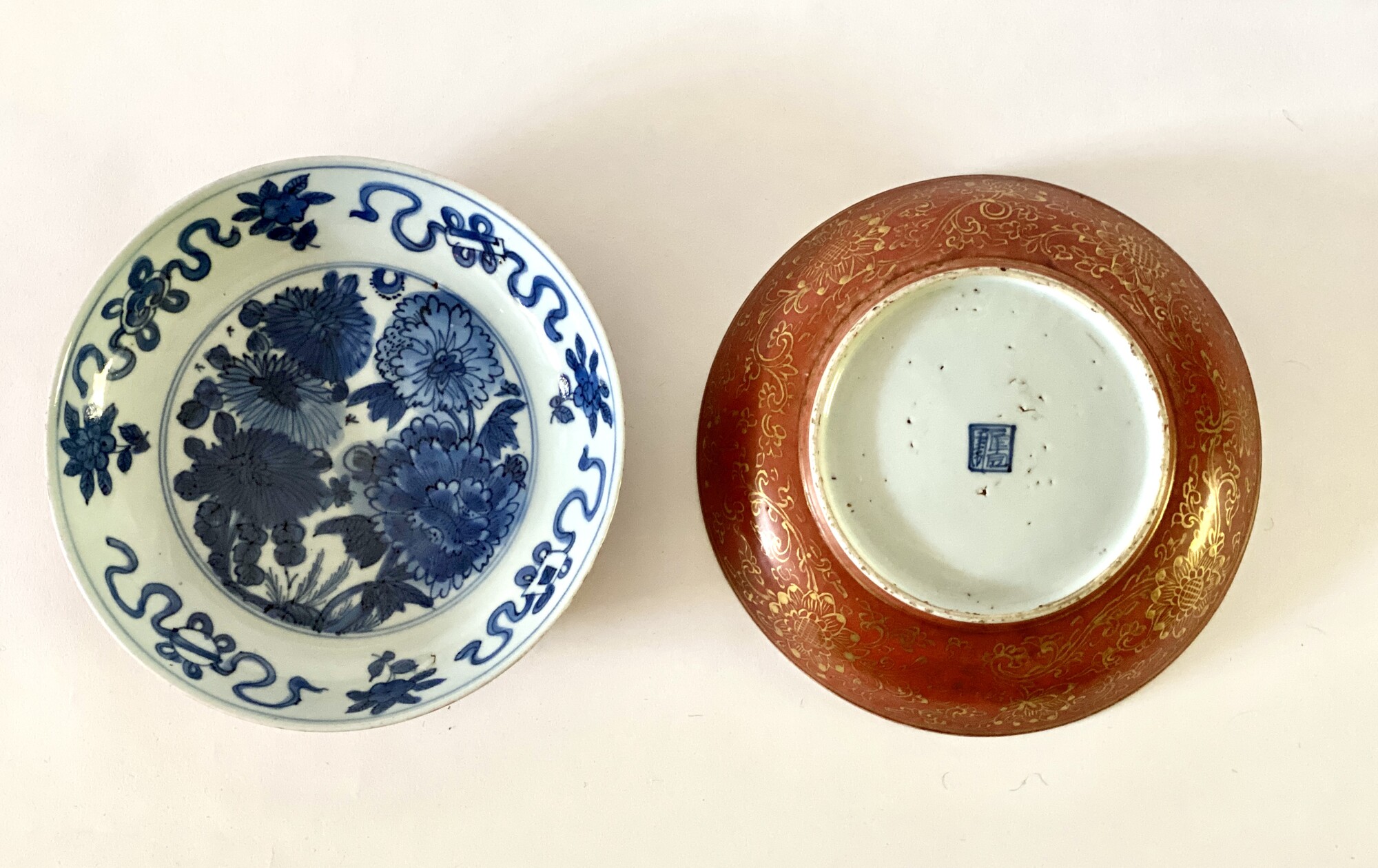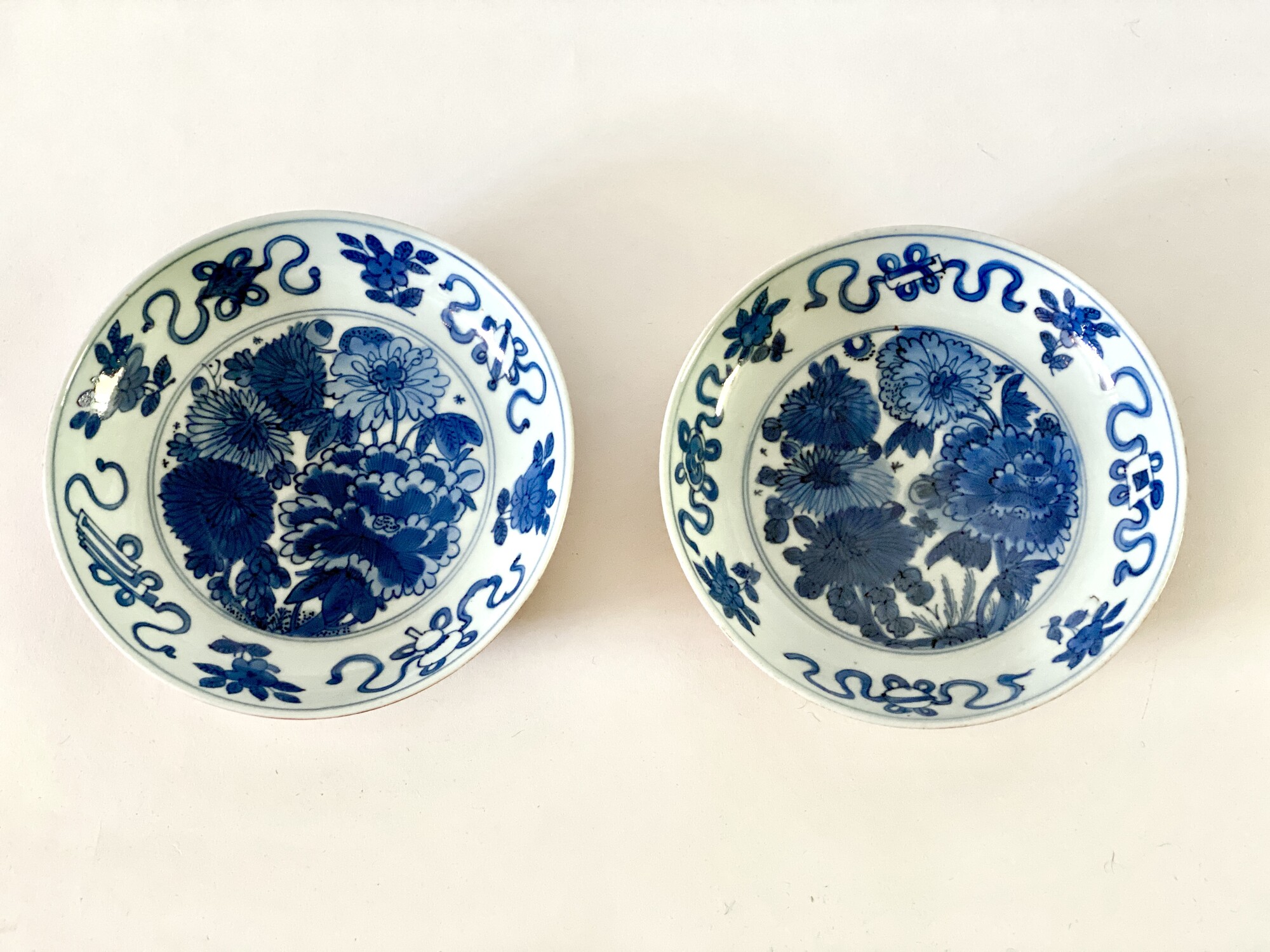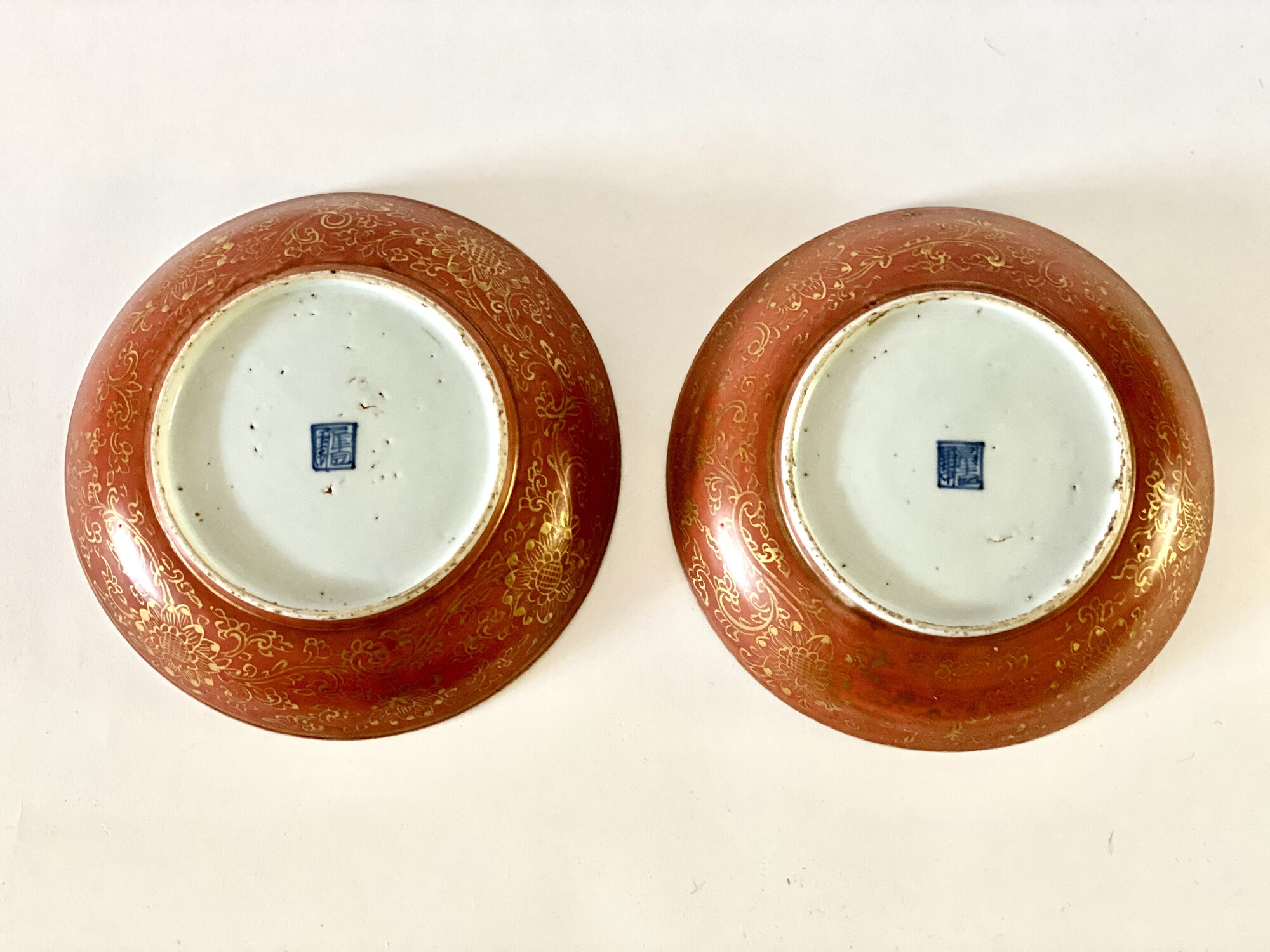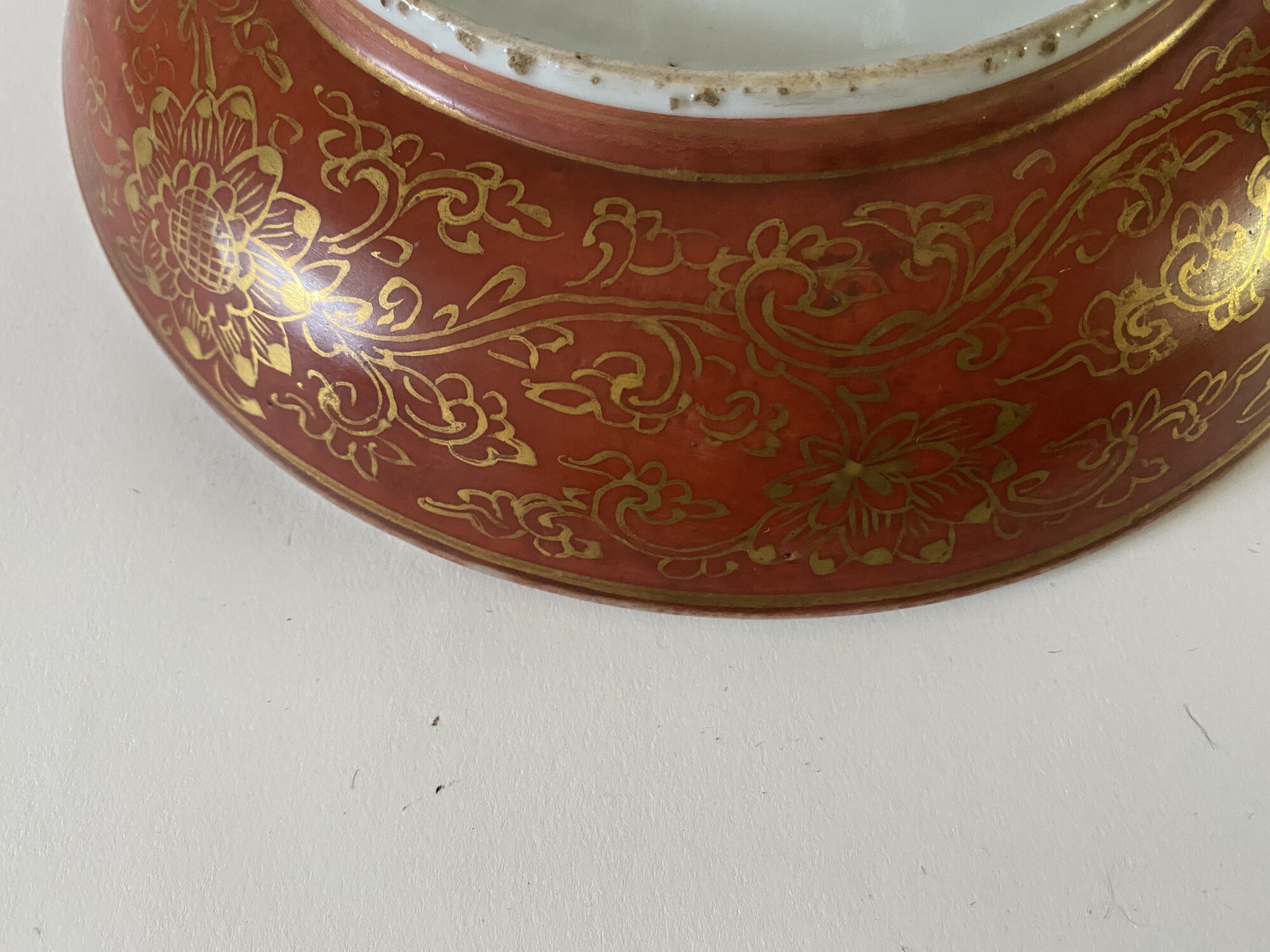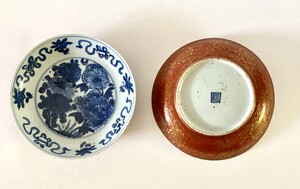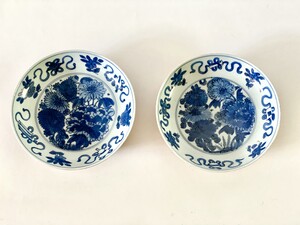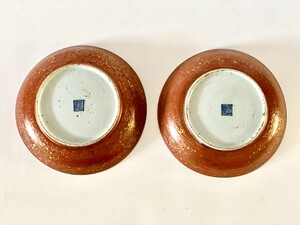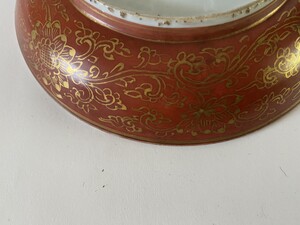Late 17th century
The dishes are of shallow form with rounded sides. The interior is painted in underglaze-blue with large flowerheads of peony and chrysanthemum within a double-line border and encircled by ribboned Taoist symbols divided by a floral spray. The outside is covered with a coral-red glaze embellished with finely drawn gold lotus and chrysanthemum heads growing from a scrolling feathery stem.
Diameter 19.4 cm
Kinrande (literally 'gold brocade') is the Japanese name for a type of Chinese porselein where gold leaf is applied on the (mostly) iron-red surface. It originated in the Jiajing (1521-1566) and early Wanli (1573-1620) periods. This type was produced mainly for the Japanese market.
Outside Japan (mainly in private collections) large numbers of kinrande porcelain can be found in the Topkapi Palace Museum in Istanbul.
BF 72 十七世紀晚期 青花金襴手樣式盤一對
時代:17世紀晚期。
特徵:盤淺,內壁施釉下藍彩,紋飾包括道教符號、牡丹與菊花。外壁施珊瑚紅釉並有精美繪製的金色蓮花與菊花紋。此類型瓷器多為日本市場所製。除了日本私人收藏外,土耳其伊斯坦堡托普卡匹皇宮博物館亦藏有大量金襴手樣式瓷器。
尺寸:直徑19.4公分。
